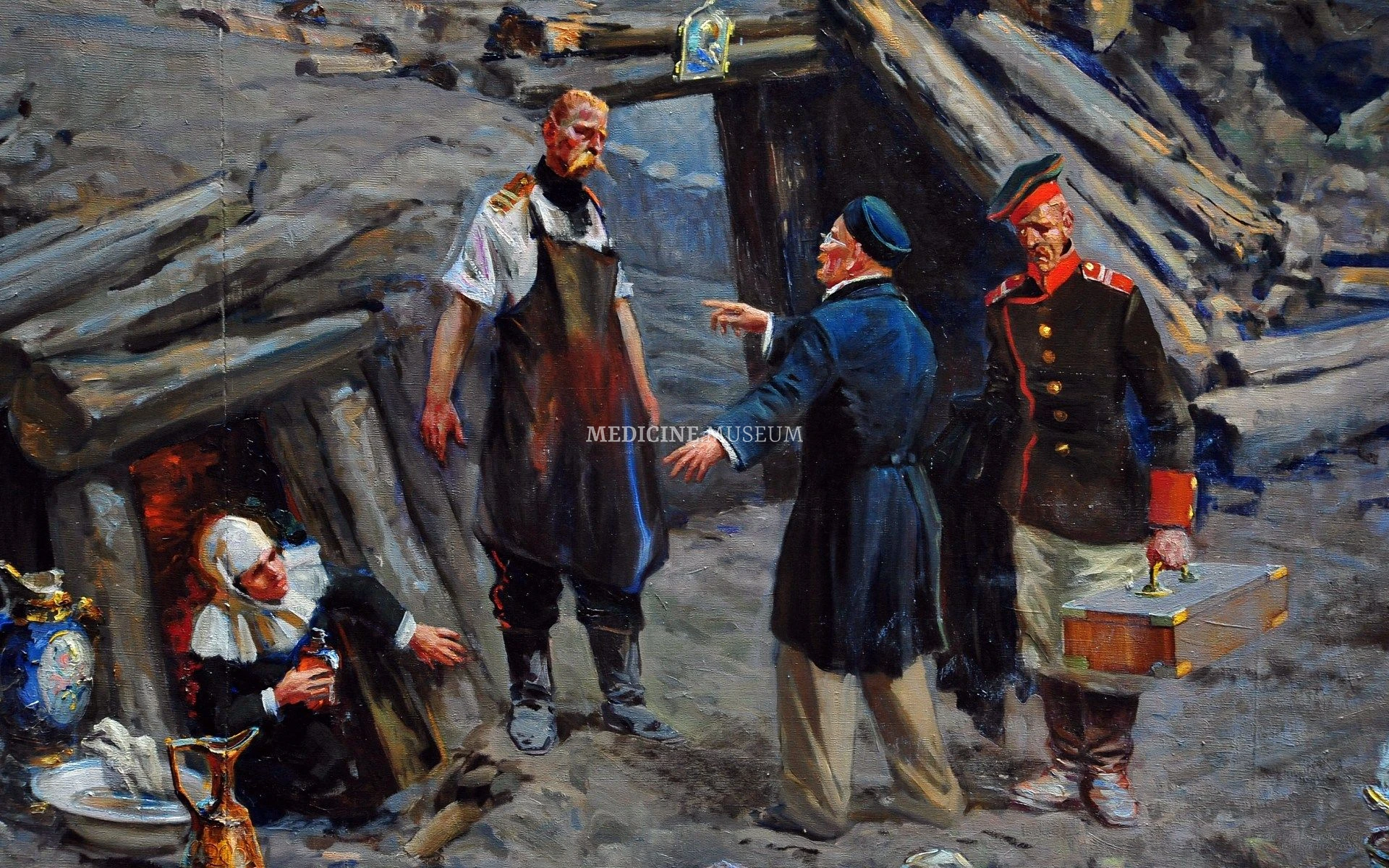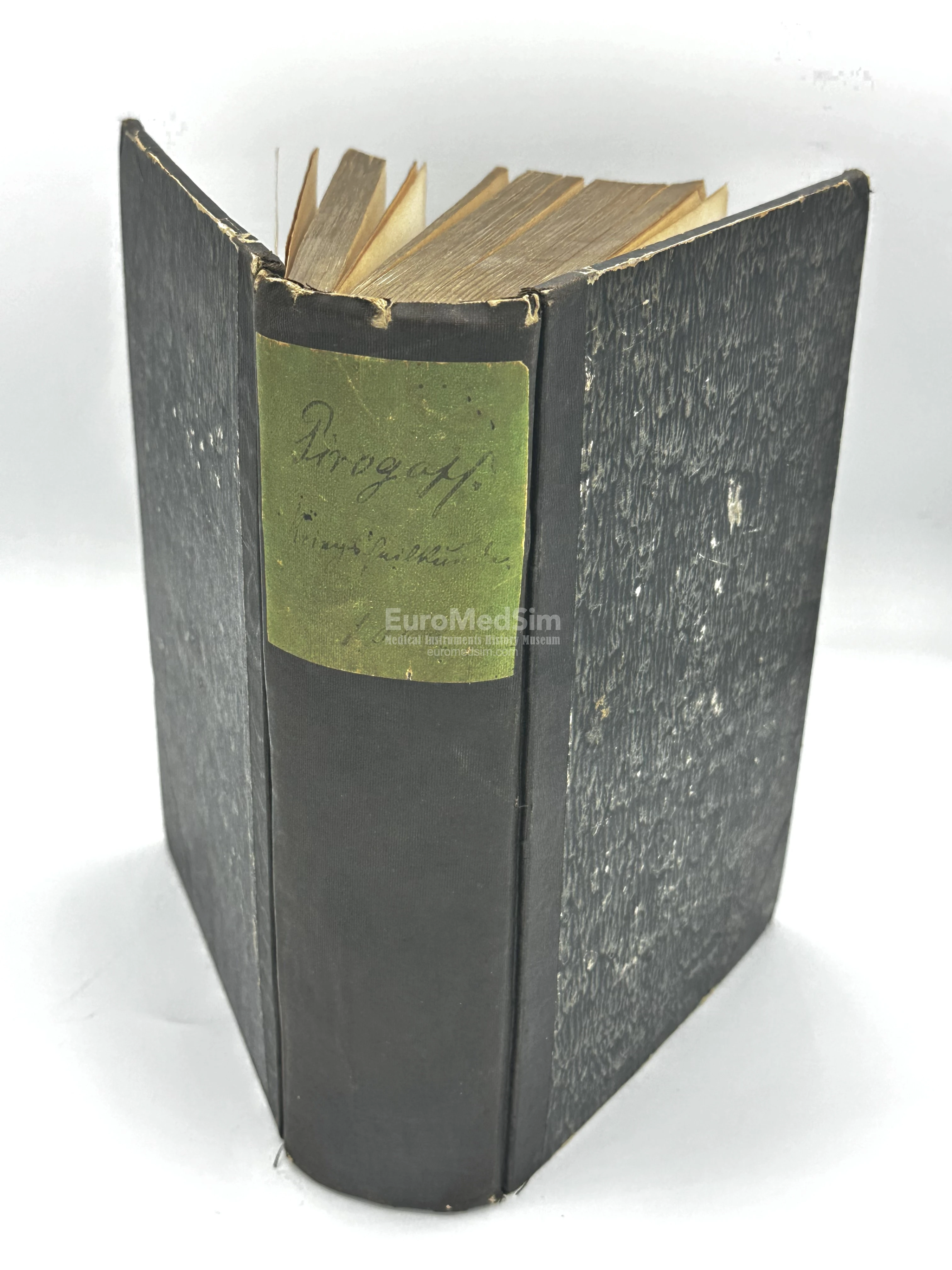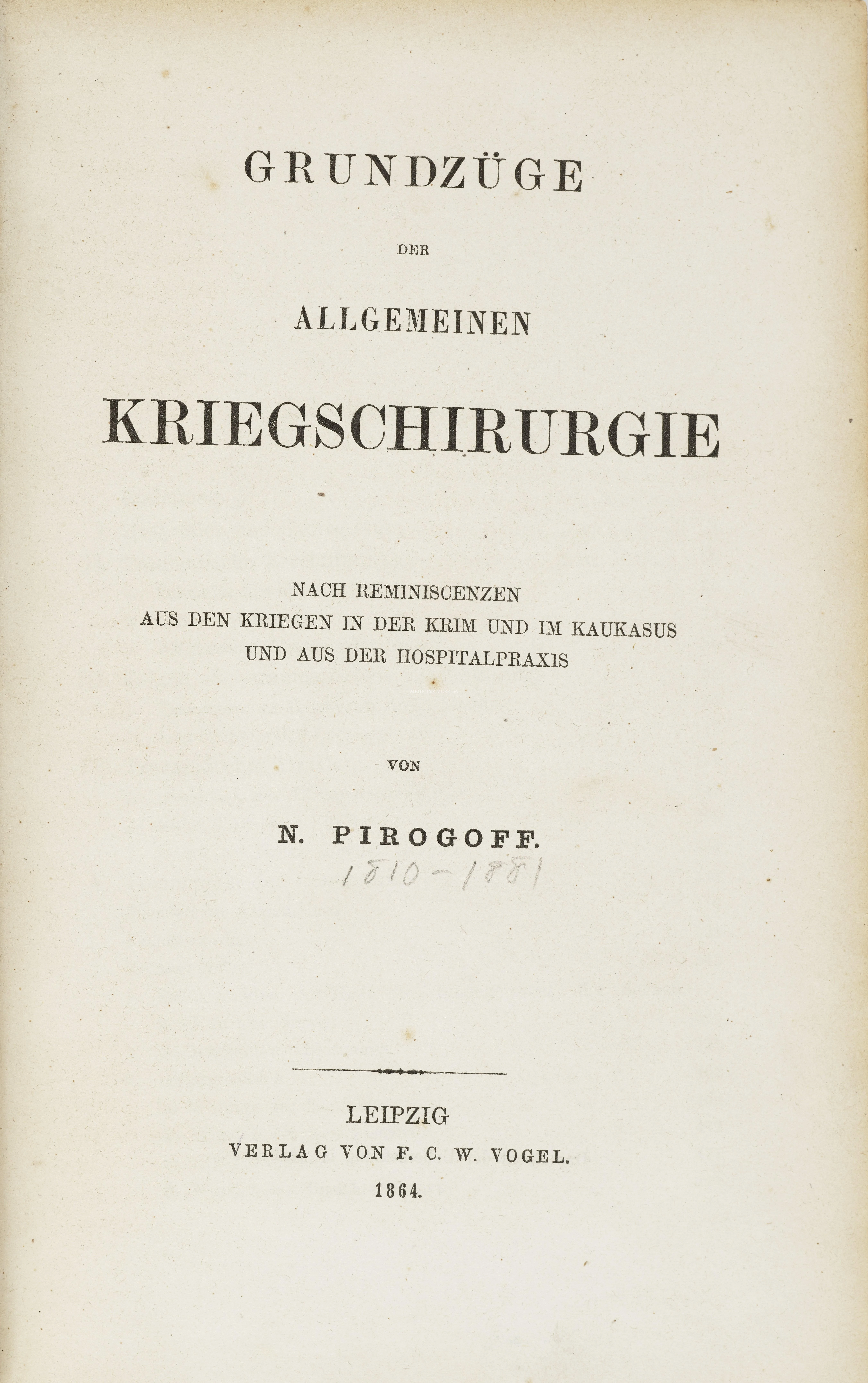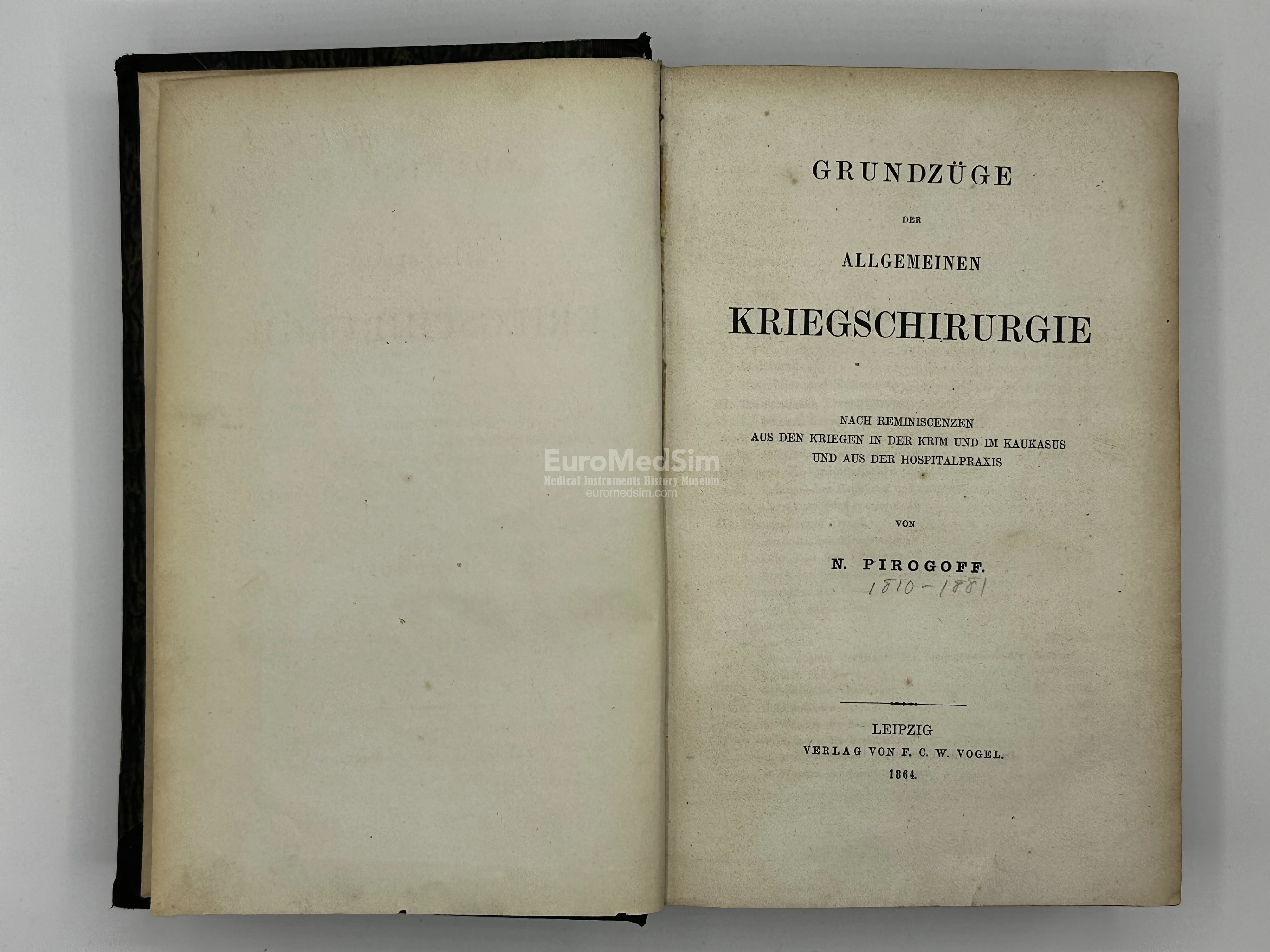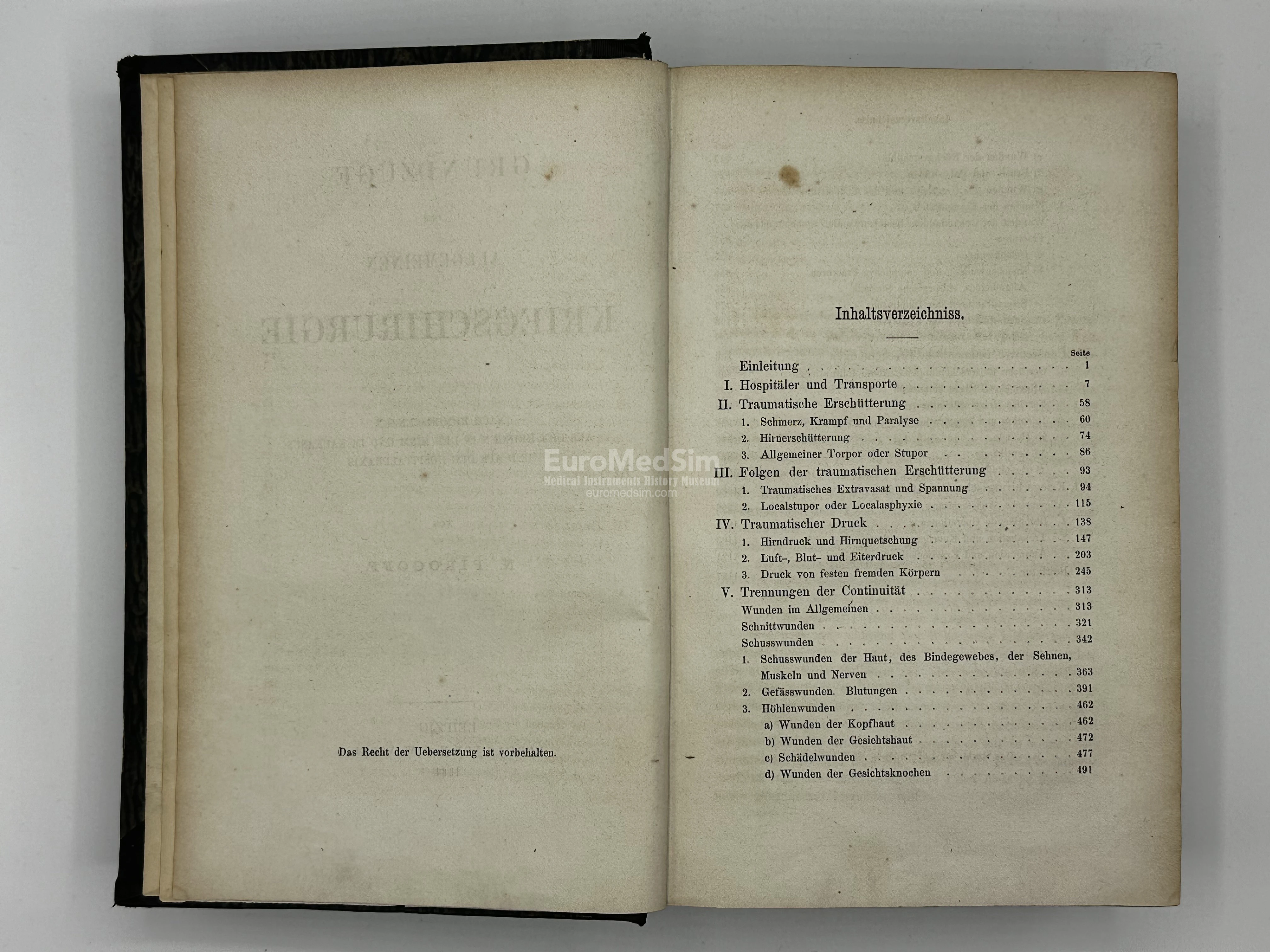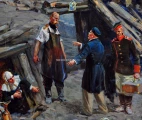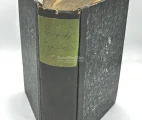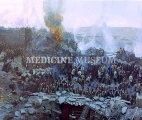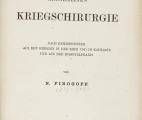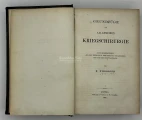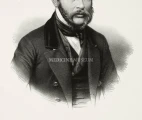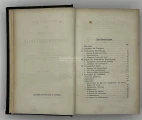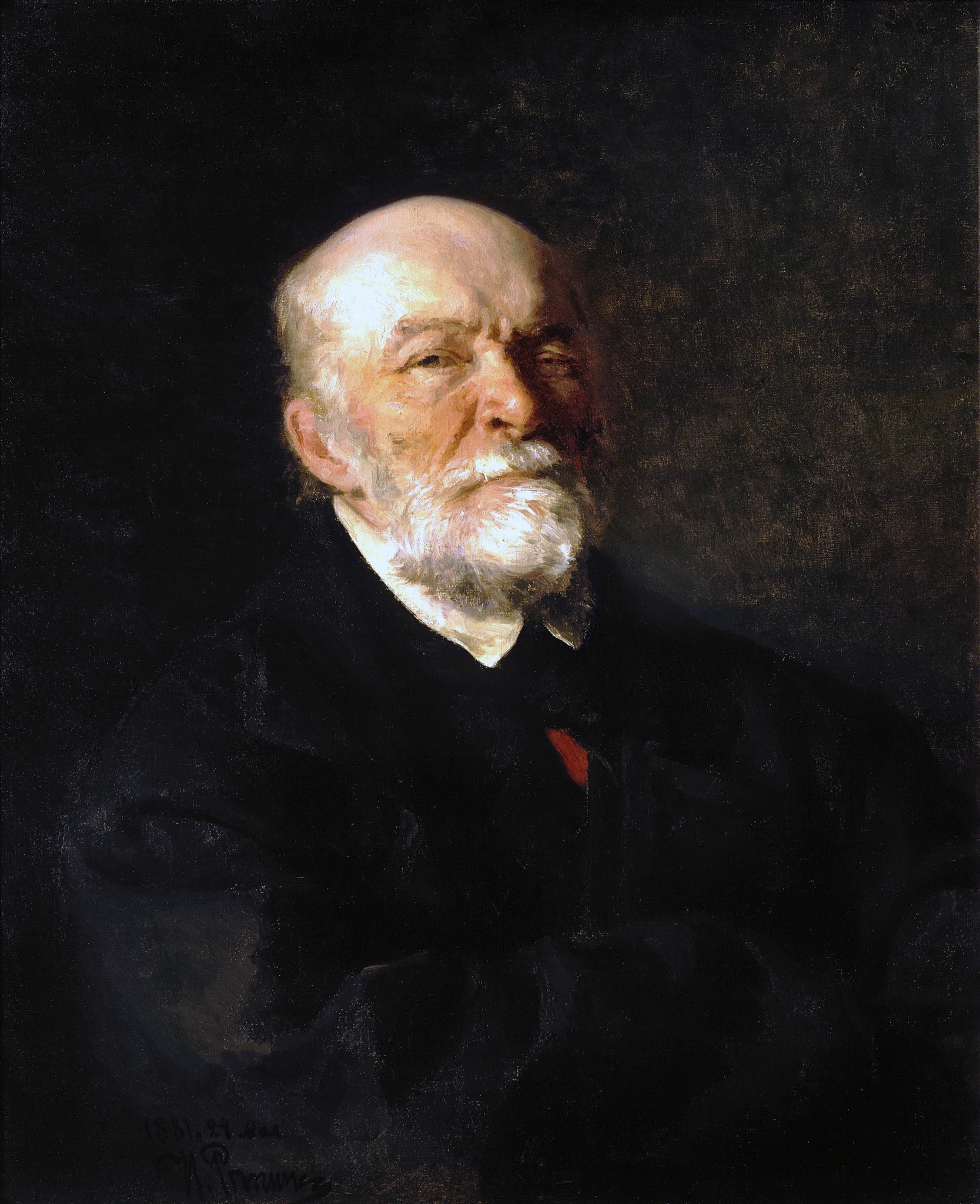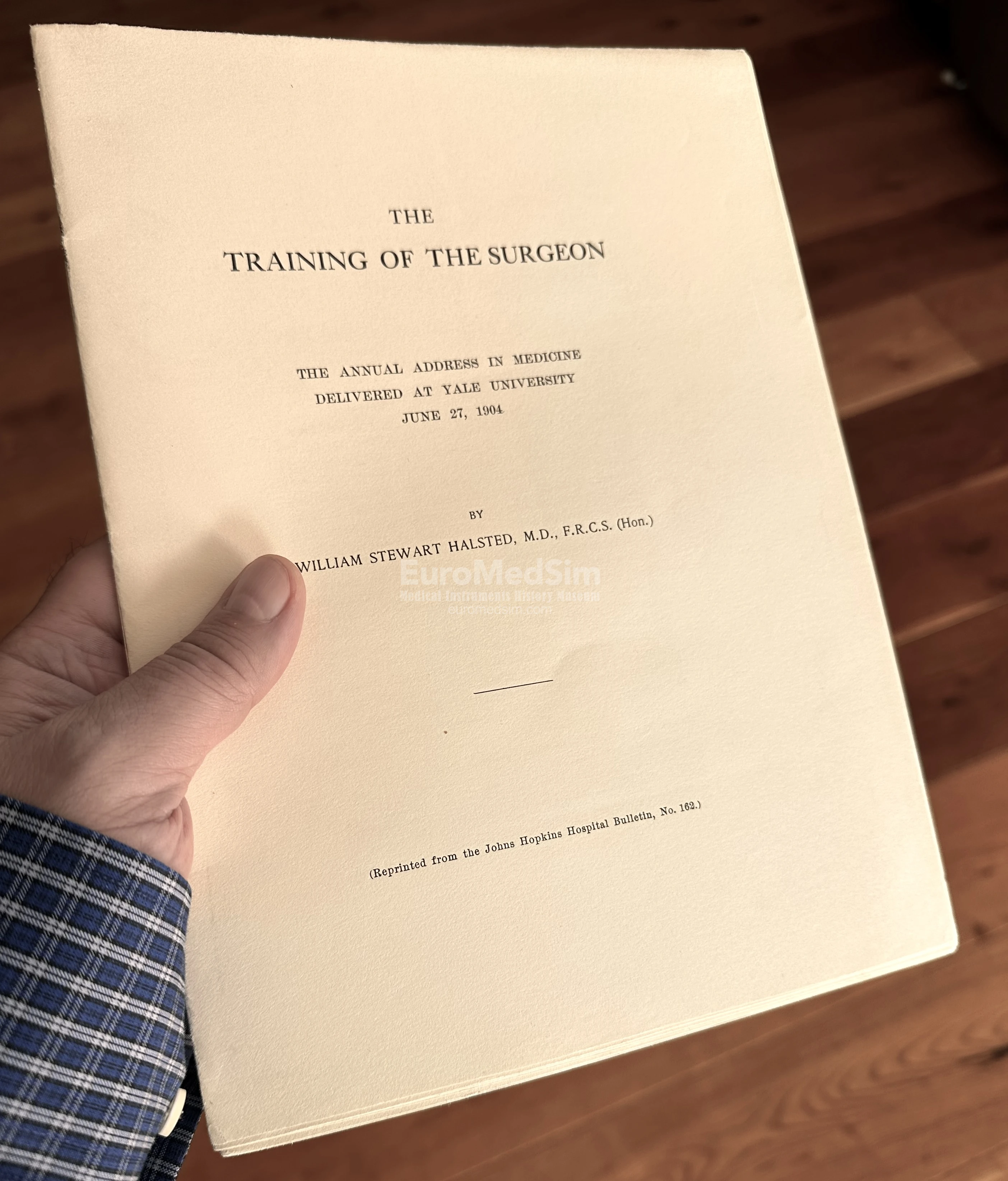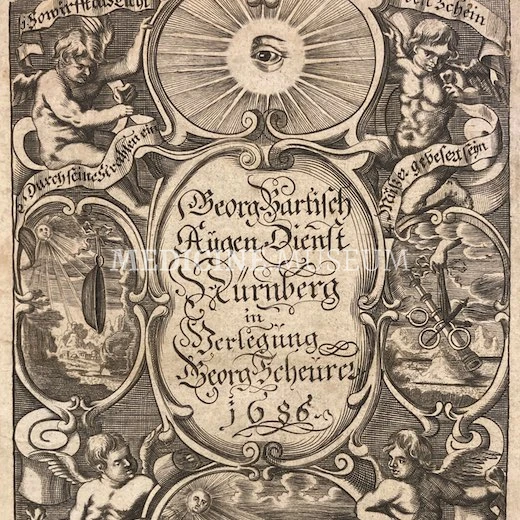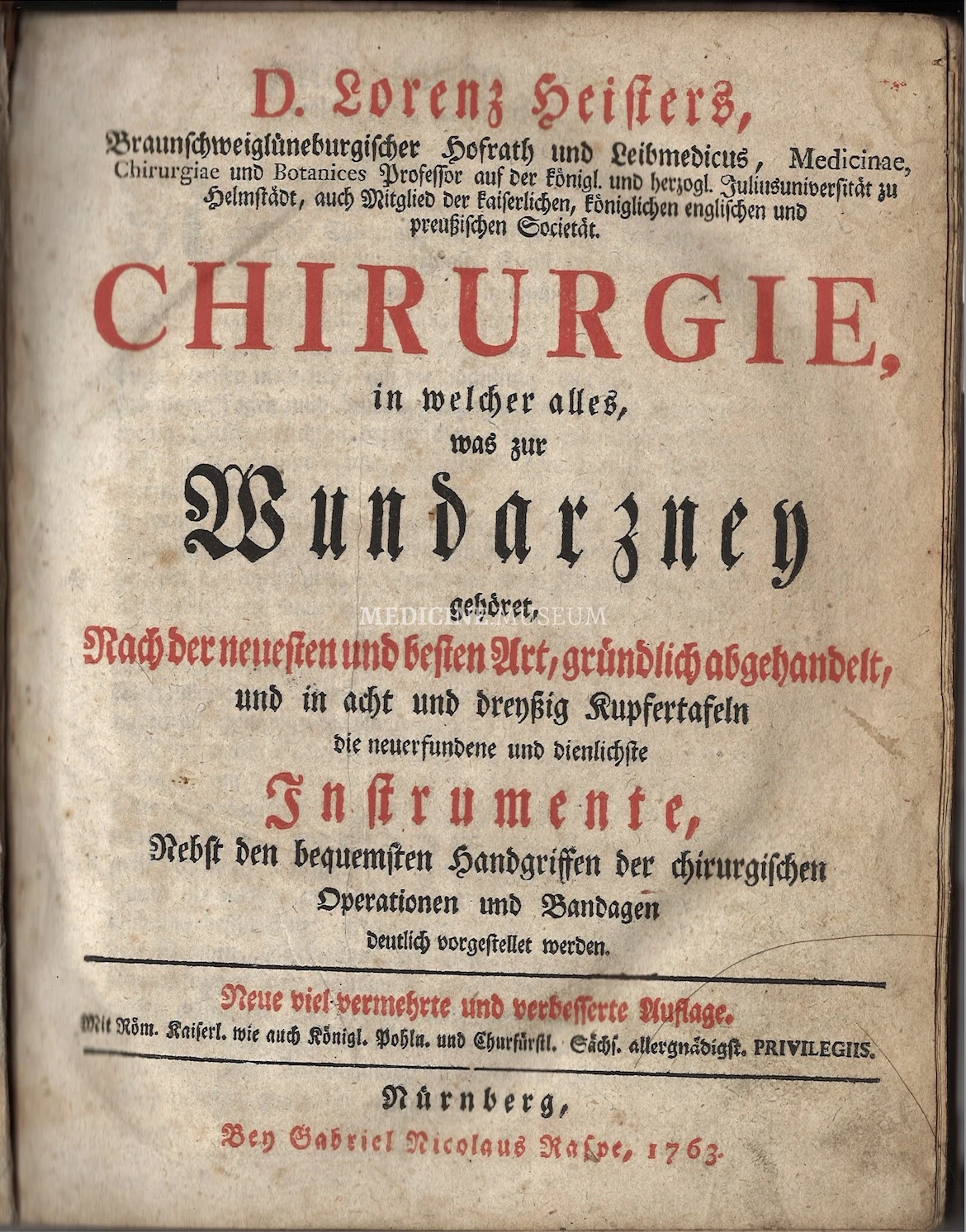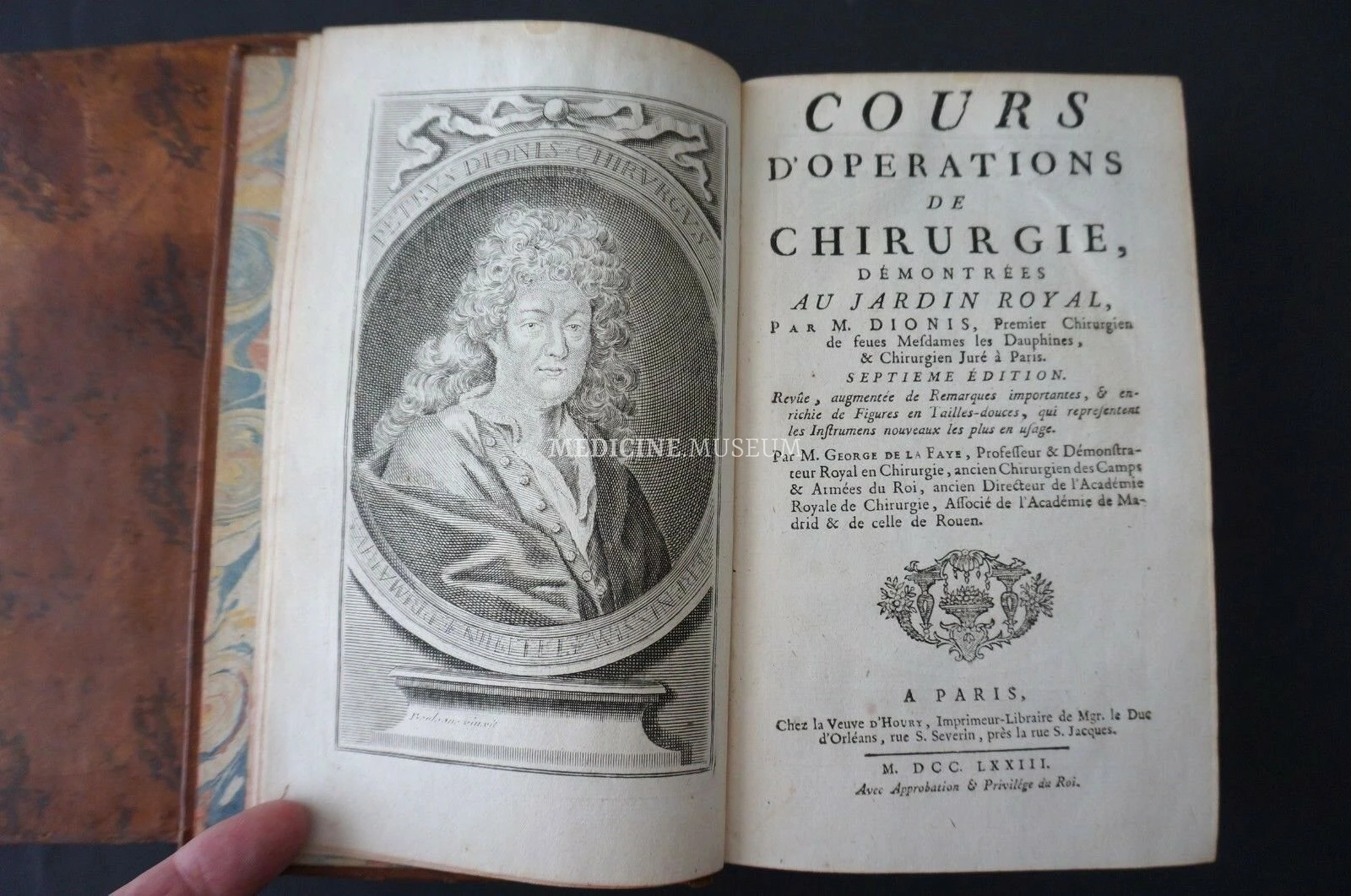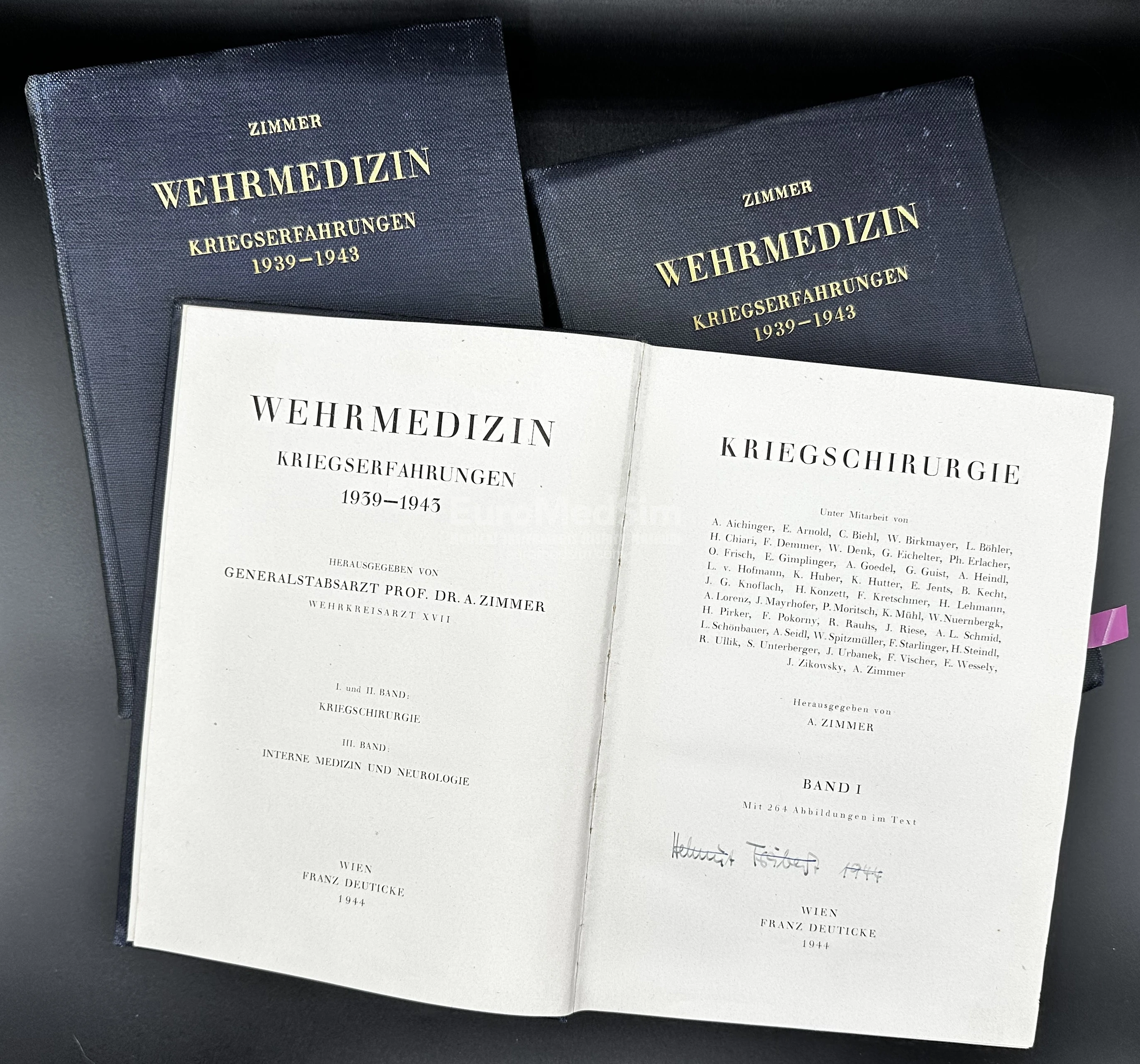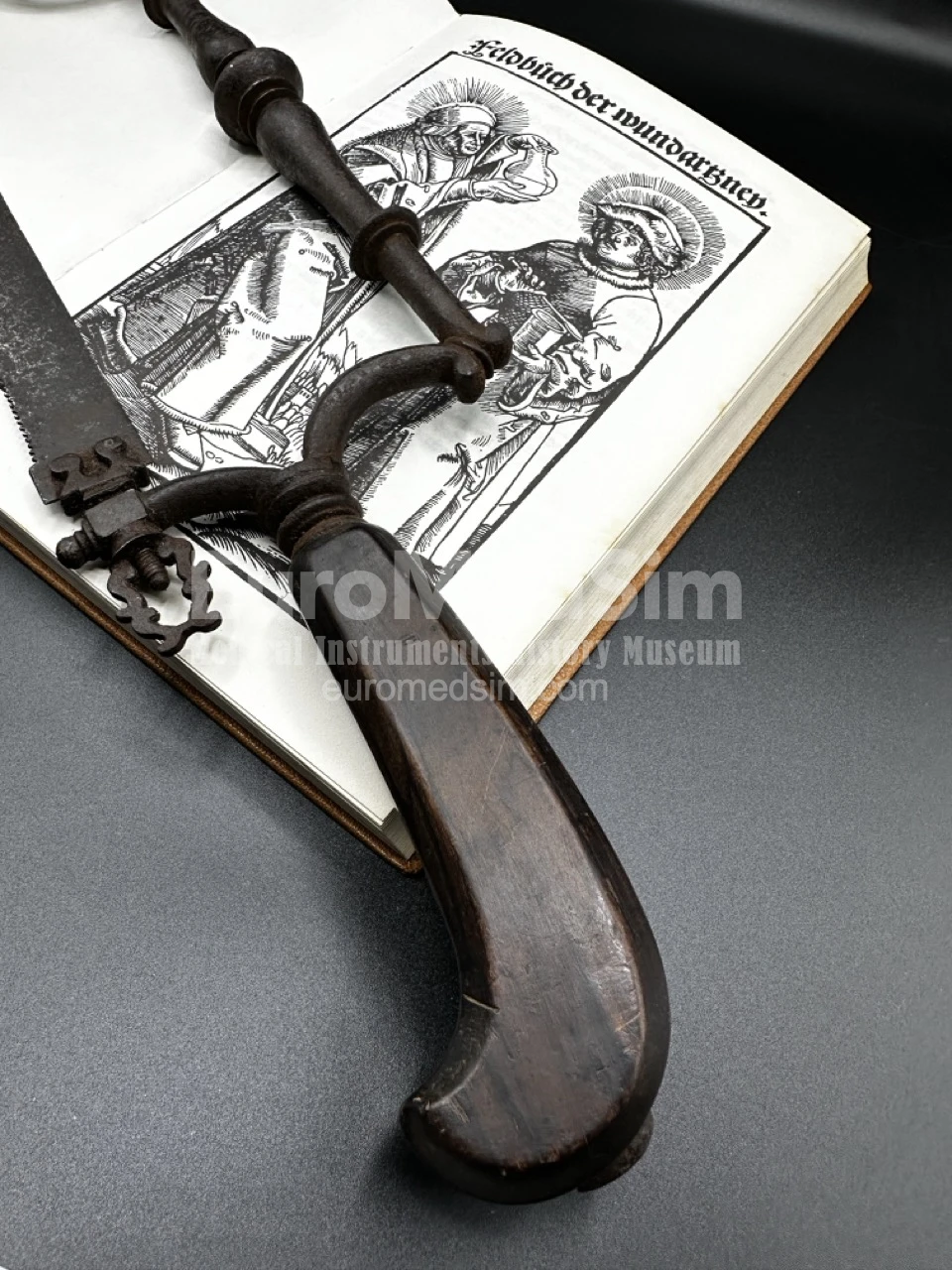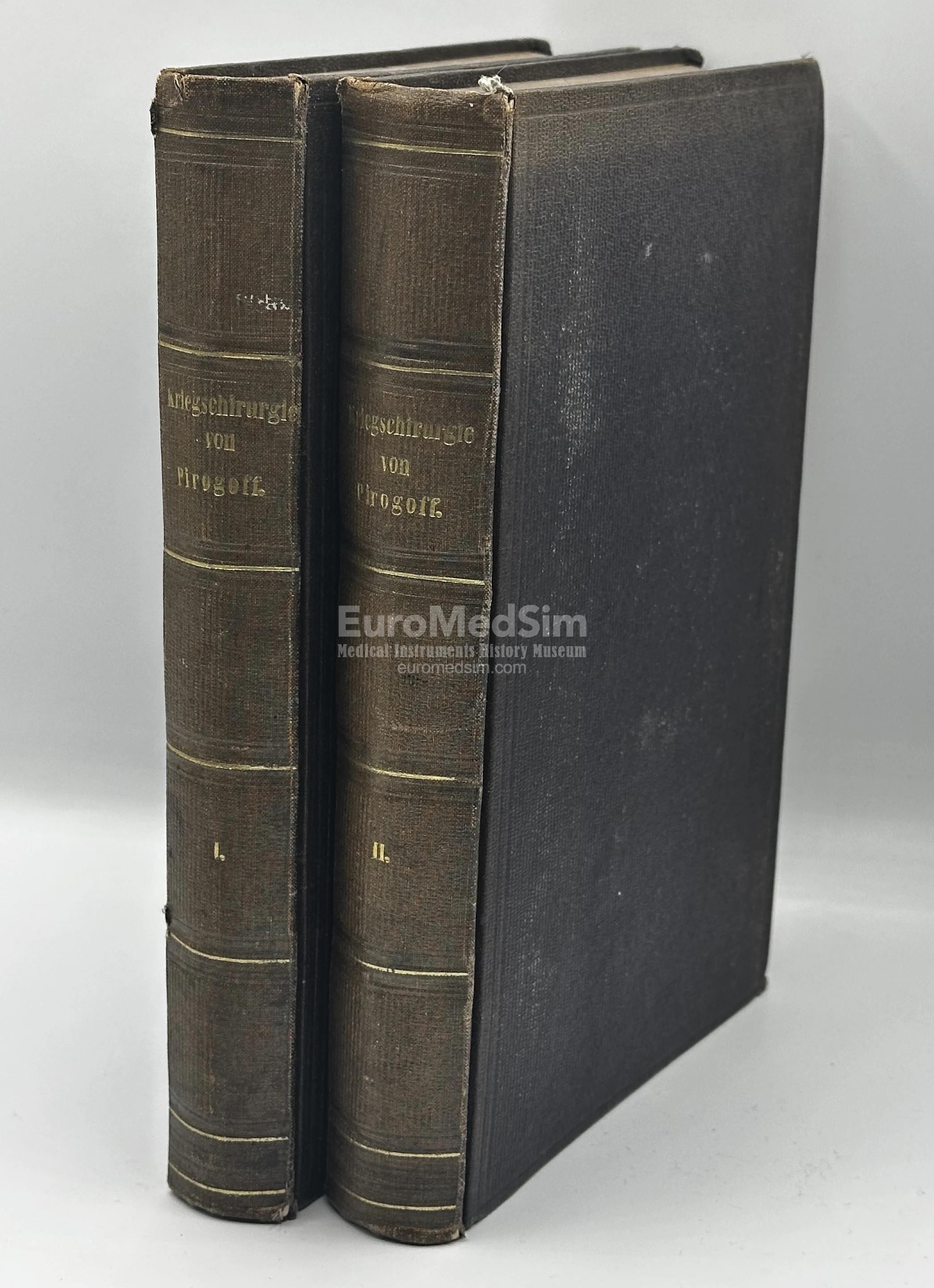Grundzuge der allgemeinen Kriegschirurgie, 1864
Principles of general war surgery, by Nikolay Pirogov, 1864
PIROGOV, Nikolay Ivanovich (1810-1881). Grundzuge der allgemeinen Kriegschirurgie... Leipzig: F.C.W. Vogel, 1864. 8vo . Full title as presented in the book: N. Pirogoff / Grundzuge der allgemeinen Kriegschirurgie nach Reminiscenzen aus den Kriegen in der Krim und im Kaukasus und aus der Hospitalpraxis (N. Pirogov / Principles of general war surgery after reminiscences from the wars in the Crimea and the Caucasus and from hospital practice), the world's first edition (the edition in Russian language followed the next year).
"FIRST EDITION OF PIROGOV'S MAJOR TREATISE ON MILITARY SURGERY, based on his experiences in the Crimean and Caucasian Wars; the German edition preceded the Russian, which was published in 1866. Pirogov, one of the greatest of all military surgeons, is regarded as the founder of modern Russian surgery. He developed his own technique of plaster of Paris dressings in 1851, and during the Crimean War he became the first to use plaster casts in the treatment of mass casualties. In 1847 he became the first to use ether anaesthesia under battle conditions, and during the siege of Sebastopol in the Crimean War, he introduced the mass use of anaesthesia in surgical operations at the front. He developed triage on the battlefield, sorting patients according to the severity of their wounds, and introduced female nursing into Russian military hospitals at the same time that Florence Nightingale, similarly inspired by her experiences in the Crimea, was introducing a parallel program in Great Britain. Le Vay The History of Orthopaedics pp 465-66; Orr 1416; Peltier Fractures pp 68-69; Waller 7464." – cited after Lot's description of Bonhams Auction.
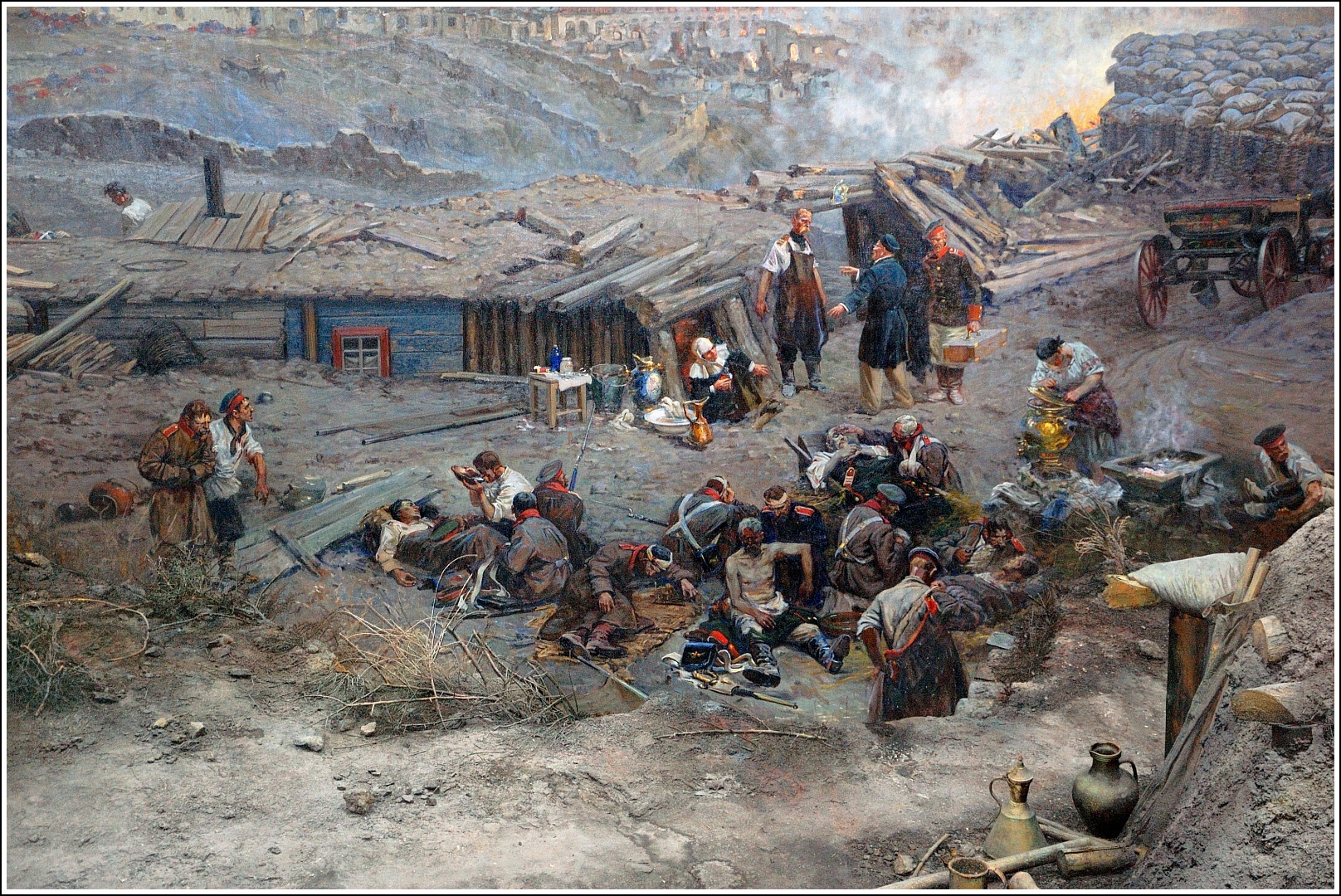
The Siege of Sevastopol. Pirogov in black coat is giving orders to a "feldscher", field paramedic. The part of the Panorama 'The Siege of Sevastopol' by Franz Roubaud, 1910
Essay
The world's first anaesthesia using ether was performed by Dr. Crawford Long on March 30, 1842, in Jefferson, Georgia, USA. This marked a significant advancement in surgical practices, allowing for pain-free operations. Unfortunately, this experience remained almost unknown and was not spread further. On October 16, 1846, William T.G. Morton successfully demonstrated the use of ether anaesthesia at Massachusetts General Hospital, Boston, which garnered widespread attention and significantly influenced surgical practices worldwide. Inspired by Morton's success, many European surgeons, including Robert Liston, began using ether. On December 21, 1846, Liston performed the first operation under ether anaesthesia in Europe, at University College Hospital in London, further solidifying ether’s acceptance in surgical procedures.
On February 1, 1847, Fyodor I. Inozemtsev, under ether inhalation anaesthesia, performed the first surgery in Russia to remove a cancerous breast. Two weeks later, on February 14, Nikolay Ivanovich Pirogov (1810–1881) performed his first surgery under ether anesthesia at the Second Military Land Hospital in Saint-Petersburg. He immediately published his findings, concluding that ether anesthesia could "completely transform surgery."
Even though he was not the first in this application, Nikolay Pirogov was a key figure in the development of anaesthesia in Russia. He experimented with ether and chloroform and organised the general introduction of anaesthesia in Russia for patients undergoing surgery. He was the first to perform systematic research into anaesthesia‐related morbidity and mortality. More specifically, he was one of the world's first military surgeons to administer ether anaesthesia on the battlefield, where the principles of military medicine that he established remained virtually unchanged until the outbreak of the Second World War.
Nikolay Pirogov’s book, “Grundzuge der allgemeinen Kriegschirurgie nach Reminiscenzen aus den Kriegen in der Krim und im Kaukasus und aus der Hospitalpraxis” (translated as “Principles of General War Surgery based after reminiscences from the Wars in the Crimea and the Caucasus and from Hospital Practice”), stands as a world's seminal work in the field of military surgery.
To that times Nikolay Pirogov was already a renowned Russian surgeon, former Professor of Anatomy and Surgery in the Dorpat (Tartu, Yuriev) University. His work as a military surgeon during the Caucasian War (1817-1864) and the Crimean War (1853-1856) provided him with a unique perspective on the challenges and necessities of military medicine. Especially his clinical and organisational talent was highlighted during the Crimean war – between the Russian Empire and an alliance of the Ottoman Empire, France, the United Kingdom, and Sardinia-Piedmont, each of them had own political interests in the Black Sea region. Pirogov’s observations and practices during these conflicts formed the foundation of his book, where he meticulously documented his methods and experiences, aiming to enhance the effectiveness of wartime medical practices.
In 1862, Nikolay Pirogov led a group of Russian students to prepare them for academic careers in Germany, the world's renominated surgical mecca. He resided in Heidelberg, where he notably treated Giuseppe Garibaldi for a wound incurred at Aspromonte. During this four-years period he published the book 'Principles of general war surgery' – originally in German language (1864, Leipzig) and a year after – in Russian (1865-1866, in Dresden). Later the other language translations followed.
Major contributions of the book
- Anaesthesia in Military Surgery. Pirogov was a pioneer in the use of ether anaesthesia in military surgery, significantly reducing the pain and trauma experienced by soldiers undergoing operations.
- Triage System. One of Pirogov’s most influential contributions, outlined in his book, is the development of a systematic approach to triage. He introduced a methodical system for prioritizing the treatment of wounded soldiers based on the severity of their injuries and the likelihood of recovery. This system not only improved the efficiency of medical care in battlefields but also became a cornerstone of modern emergency medicine.
- Plaster Casts. His innovative use of plaster casts for immobilizing fractures was another groundbreaking development. He followed the work of Belgian doctor Louis-Joseph Seutin in introducing plaster casts for setting broken bones. During his service in the Crimean War, he recognized the importance of stabilizing broken limbs to prevent further damage and facilitate healing. His methods in this regard were highly effective and are still foundational in orthopedic surgery today.
- Field Hospitals. Pirogov emphasized the importance of establishing well-organized field hospitals near battlefronts to provide immediate care to the wounded. His detailed descriptions of the setup, management, and operation of these facilities in his book provided a blueprint for military medical logistics, enhancing the survival rates and recovery times of injured soldiers.
Thus, Pirogov’s book not only served as an instructional manual for military surgeons of his time but also laid the groundwork for future advancements in both military and civilian medical practices. His systematic approach to surgery, use of anesthesia, and development of the triage system had a lasting influence, shaping modern surgical techniques and emergency medical procedures. The principles he outlined in “Grundzuge der allgemeinen Kriegschirurgie” have transcended time, reflecting his profound impact on the field of surgery.
Staying on different front lines of the Crimean War, the great personalities - Nikolai Pirogov and Florence Nightingale - revolutionized military medicine, setting new standards in the treatment of the wounded with their humanism.
Condition report
Format 8vo. 1168 pp. and nn Errata page. Dimensions (H, W, D): 22.6 cm, 15.5 cm, 5.2 cm. Weight 1,375 g. 'Later half buckram and marbled boards, green cloth lettering piece hand-titled in ink on spine. Rubbed, ink and pencil notations on front free endpaper, light wear and even toning.' (quoted from the Bonhams web-site).
Provenance
- The Arthur Lyons MD Library, San Francisco, CA, USA (see Footnote 1)
- Acquired from above through Bonhams Auctions NY, USA, on 25.06.2024.
References
- Grundzuge der allgemeinen Kriegschirurgie nach Reminiscenzen aus den Kriegen in der Krim und im Kaukasus und aus der Hospitalpraxis. Leipzig: Verlag von F. C. W. Vogel, 1864. First edition.
Compare to:
- Reference 1 in Wellcome Collection: Full text in PDF
- Reference 2 in Wellcome Collection: Full text in PDF
- Reference 3 in EuroMedSim Collection
Начала общей военно-полевой хирургии, взятыя из наблюдений военно-госпитальной практики и воспоминаний о Кримской войне и Кавказской экспедиции / Н. Пирогов. Дрезден : Блохман и Сын, Часть 1 – 1865, Часть 2 – 1866 (Pirogov N., Basic principles of general war surgery after reminiscences from the wars in the Crimea and the Caucasus and from hospital practice. Dresden: E. Blochmann & Sohn, 1865-1866). First edition in Russian language. Full text in PDF in Russian: Part 1, Part 2.
- Koutsouflianiotis K, Paraskevas GK, Zagelidou E, Dimakopoulou K, Noussios G. The Life and Work of Nikolai Ivanovich Pirogov (1810-1881): An Outstanding Anatomist and Surgeon. Cureus. 2018 Oct 8;10(10):e3424. doi: 10.7759/cureus.3424. PMID: 30546975; PMCID: PMC6289555. https://pubmed.ncbi.nlm.nih.gov/30546975/
- Hendriks, I.F. Nikolay Ivanovich Pirogov and his contribution to medicine in 19th Century Imperial Russia, Doctoral Thesis (2022), Leiden University. https://scholarlypublications.universiteitleiden.nl/handle/1887/3491451
Footnotes
Footnote 1
1. Arthur Lyons, M.D. (1931-2023), a prominent neurosurgeon, practiced since 1966 in San Francisco, on the staff of Mount Zion Hospital for over 40 years, serving as Chief of Neurosurgery from 1985 to 1992, Associate Clinical Professor at UCSF, elected President of the San Francisco Medical Society in 1988.
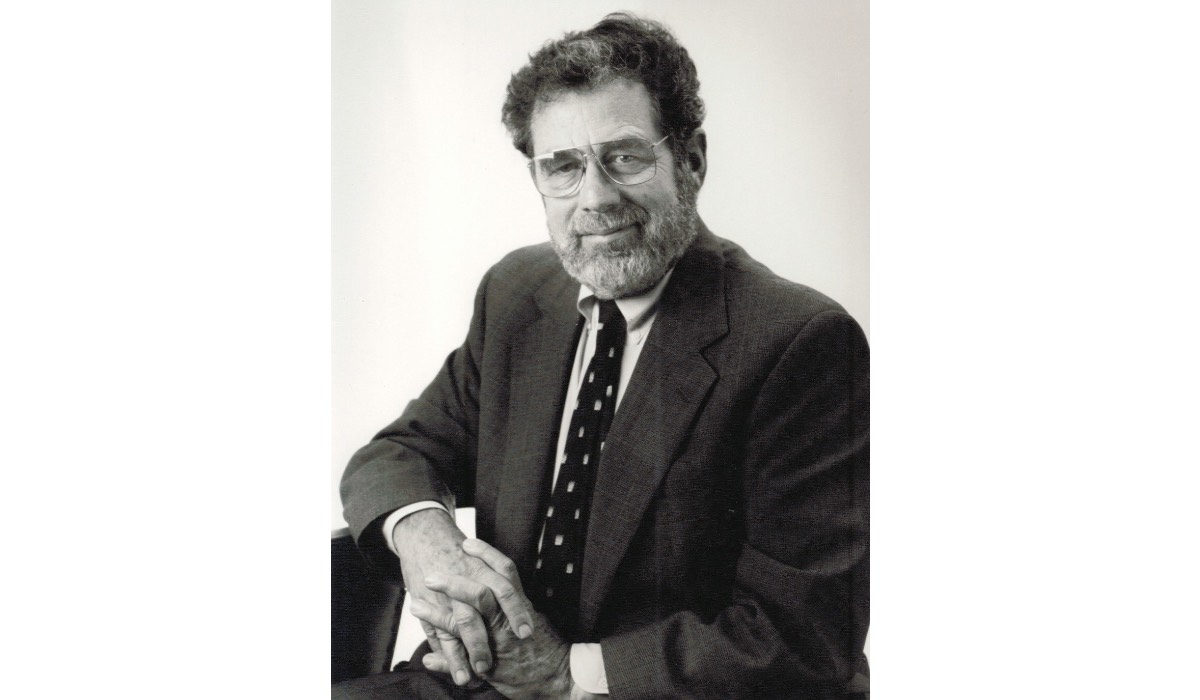
Arthur Lyons MD, San Francisco. Courtesy of calisphere.org
A recognized and published expert in the history of medicine, he collected antiquarian medical books, amassing hundreds of volumes dating back to the 15th century including Albucasis, Gersdorff, Heister, Ketham, Lanfranchi, Lister, Liston, Mayo, Paracelsius, Paré, Pavlov, Pirogov, Pott, Purmann, Vesalius, and many more.
Footnote 2
The Siege of Sevastopol is a oil painted panorama by the Russian artist Franz Roubaud. It shows the Allied assault on the Malakhov Battery on 6th of June, 1855 during during the Crimean War, in which 173,000 British and French troops were repulsed by 75,000 Russians. It features portraits of admiral Pavel Nakhimov, the Russian nurse Dasha and Nikolay Pirogov. The painted in 1902-1904 panorama was places in a dedicated round building in 1905, the fiftieth anniversary of the siege. The huge painting was damaged during the German-Romanian siege of Sevastopol in 1942 and restored in the 1950s.
Footnote 3
This particular copy of the book is preserved in a single volume. Yet in several museums one also finds examples of the very same first edition—identical in content and with continouse pagination—bound instead in two separate volumes. In those cases, the second volume does not carry its own title page and opens abruptly at page 529, interrupting the flow of a chapter. Such differences are not textual but physical, arising from binding decisions made after publication by owners or institutions. This practice was widespread in the 19th century, especially in Germany, where readers often had discretion over the final form in which their books were bound. Bibliographers sometimes refer to such anomalies as a “bibliographical ghost”—a curious product of historical binding and collecting habits rather than a distinct edition.
Footnote 4
Dr. Asher Williamson Evans (1823-1912) volunteered to participate in the Crimean War (1853-1856) as a field surgeon. Upon arriving in Crimea, Florence Nightingale noted that Evans had some experience managing hospitals in Great Britain, which changed his priorities in medical work. The Science Museum collection includes a surgical kit that belonged to Dr. Evans during his Crimean expedition, but judging by its excellent condition, it appears to have been used infrequently.
